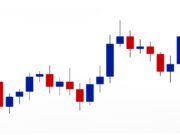Preface: Penny stocks are notoriously volatile…
At least the one’s we like to trade within a week…
So, naturally you need to have a fresh batch of penny stocks to watch every week…
But how do you find those?
That’s easy…
We’ll give them to you at least once a week in our Wall Street Watchdogs…
The fact that you’re here means that you’re serious about your financial future, and you’ve arrived at the right place...
Below are the penny stocks for this week.
Enjoy,
Rich @ Timely Trade Alerts
Wall Street Watchdogs’ Penny Stock Hotlist for This Week.
During the 1999 Berkshire Hathaway shareholders meeting, Warren Buffett expressed with contrition that if he’d had less money to invest, he’d be able to generate 50% annual returns — guaranteed.
The reasoning behind Buffett’s statement is simple: Smaller companies grow faster and have offered the highest stock market returns over the last three decades.
It might sound strange, but from a growth standpoint, this means that Buffett is actually jealous of you. Specifically, he’s jealous of your smaller capital position.
Unlike Buffett and the Wall Street banks, you can invest in the world’s best equities while keeping your positions liquid.
In fact, the only reason that Buffett and the big banks no longer invest in small-cap stocks is because they simply have too much money.
Of course, for almost everyone else, having too much capital isn’t a problem. It tends to work in the opposite direction…
So, Why Small-Cap Stocks?
Well, there are many reasons why small caps consistently outperform competing sectors.
And we address some of these reasons below…
1. Agile Figures
This one’s pretty simple: It’s easier to double figures when the baseline is small. For example, growing revenue from $20 million to $40 million is much more practical than growing $20 billion to $40 billion.
Likewise, the market is more inclined to push a $9 stock to $18 within a short period of time than to move a $400 stock to $800…
2. Nimble Operations
The larger a company becomes, the more difficult it also becomes to manage. Smaller companies are often in growing industries and are able to respond to changing market conditions. Large caps have less success adapting because they become entrenched in their specific roles.
At the same time, smaller companies are often run by dedicated founders or a small management team that’s dedicated to increasing their shareholder value…
3. Inefficient Market
Small-cap stocks are rarely covered by large brokerage firms. And this results in the high possibility of inefficient pricing. Likewise, there’s limited analyst coverage. So, many small firms — and their details — get overlooked.
Generally, these factors reduce the number of buyers for a stock. And they often cause prices to be unjustifiably low. As these companies grow and perform, the stocks gain more attention, which increases volume and valuation…
4. Hidden Value
Related to the points above is the existence of hidden value. Although the roles of small companies are often obscure, many are well-positioned in niche industries. Despite their size, these companies can be indispensable gears that move a much larger machine.
The more specific a product or service is, the smaller the competition. Likewise, small caps that service larger firms are often takeover targets. And this allows investors to profit from significant premiums on shares.
With that said, here are three small-cap stocks that you need to watch today…
Small-Cap Stock No. 1:
Lantronix, Inc. (NASDAQ: LTRX)
Lantronix develops and markets its own networking and communications devices with a focus on the emerging and lucrative internet of things (IoT) space.
Specifically, the company supplies secure IoT gateways that enable other companies to simplify the creation, deployment, and management of their IoT projects.
The company focuses on what some would call the enterprise IoT, which is considered the largest of the three main IoT sectors: enterprise, home, and government. This is pretty much a no-brainer because businesses have the capital to buy IoT products on a large scale.
As Business Insider Intelligence reports, enterprise IoT will account for approximately 40% of the IoT market.
In simple terms, the IoT is all about connecting traditionally unconnected devices. And more often than not, it’s for industrial applications. Collecting and analyzing all this previously nonexistent data allows original equipment manufacturers (OEMs) to improve automation and efficiency in countless ways.
We aren’t getting into too many specific examples, but as the saying goes: Knowledge is power. If you’re a business owner with remote or mobile assets, you’ll want to know where they are and what they’re doing in real time. This could mean giving customers real-time tracking on their orders. Or it could mean allowing you to perform predictive maintenance on your assets.
Lantronix also makes IoT building blocks, which are exactly what they sound like.
Unlike major consumer hardware products, such as smartphones or notebooks, IoT devices can vary greatly in their uses, designs, and applications. This generates incredible demand for modular components, such as systems on a chip (SOCs) and systems on a module (SOMs). This enables companies to flexibly develop their own IoT solutions.
SOCs are Lantronix’s bread and butter. And they place the company comfortably at the center of the IoT space.
Here are a few conservative projections for this market:
- The Boston Consulting Group predicts that by 2020, $267 billion will be spent on IoT technologies, products, and services.
- MarketsandMarkets believes the IoT market will be worth $195.5 billion by 2022.
- And Berkshire Hathaway’s Business Wire puts the figure at $201 billion by 2025.
There are also more aggressive estimates out there from organizations like IDC and companies like Cisco. These estimates put IoT revenues as high as $8.9 trillion by 2020, or $14.4 trillion by 2022 respectively.
These forecasts tend to use a much broader definition of the IoT market than others. But any way you cut it, you’re looking at double-digit (20%–30%) compound annual growth rate (CAGR) over the next five to 10 years.
All these factors make Lantronix a compelling small-cap company…
Small-Cap Stock No. 2:
SolarEdge Technologies, Inc. (NASDAQ: SEDG)
SolarEdge Technologies provides a range of solar products. This includes power optimizers, solar inverters, and monitoring solutions for photovoltaic arrays. In short, these products allow consumers to increase the energy efficiency of solar through what’s called module-level power electronics (MLPE).
In addition to a great reduction in costs, SolarEdge claims that its HD-Wave inverters also increase efficiency from 97.5% to 99%. That might not seem like a very big improvement, but all said and done, it means the inverters dissipate less than half the heat of current models.
With many new products launching, strong growth in the U.S. market, and substantial cost reduction, SolarEdge has positioned itself as a clear leader in what will prove to be a rapidly expanding industry.
According to IHS, the global market for module-level power electronics is expected to grow to $1 billion by 2019. That represents a CAGR of 19% from today. SolarEdge controls approximately 70% of the D.C. power-optimizer market and an estimated 20% of the inverter market, compared to only 1.7% in 2012.
The U.S. market accounts for a large proportion, approximately 70%, of SolarEdge’s latest revenues. About one-third of its total sales comes from a single customer, identified as “Customer B” in its early S-1 filing.
SolarCity is likely the only company that’s large enough to account for that proportion of SolarEdge’s revenue. This represents significant exposure to a single customer. And it means a crucial launching pad in the U.S. residential space.
SolarEdge is looking to increase its market share of the growing U.S. residential landscape. And SolarCity is not a bad customer to have on board in what will be a huge market over the years to come.
But the U.S. market is only a piece of a much larger story. Long term, IHS analysts expect tremendous growth from the international community:
The growth opportunity for [solar inverters] outside the U.S. is huge. Provided microinverter and power optimizer suppliers can keep expanding into new geographical markets, and keep innovating to take advantage of energy storage and other new growth markets, there is plenty of room for both technologies in the market.
With the world moving toward sustainable energy, SolarEdge is in a strong position of growth. All told, the company increased its revenue by 82.40% over last year as of its most recent 10-Q.
That should be a compelling number to investors who are looking to ride SolarEdge on the way up…
Small-Cap Stock No. 3:
Pointer Telocation Ltd. (NASDAQ: PNTR)
Pointer Telocation is an Israeli company. It operates primarily in mobile resource management (MRM) and roadside assistance.
It’s not technically a play on driverless cars. But the firm is well situated at the point of transition: a period where connected vehicles and human drivers, particularly in the commercial industry, will work together to maximize efficiencies.
Through a combination of GPS location tools and web-based applications, Pointer enables its customers to track the location, speed, and status of their vehicles and assets. And this is all while allowing it to keep track of driver behavior and various other data points. The company currently provides these services in Israel, Argentina, Mexico, Brazil, and South Africa.
Pointer also provides stolen vehicle-retrieval and car-sharing services. At its core, Pointer Telocation is an asset-management company that lets fleet operators keep track of their property.
But Pointer attacks not only mobile resource management but also the IoT and other applications, as well. The firm’s sensor capability doesn’t stop at GPS. It also extends to a range of measurements, which includes pressure, temperature, RPMs, breaking speed, fuel use, vehicle diagnostics, and others, depending on the application.
Here are the main industries that Pointer serves:
- Transport and logistics.
- Cold chain logistics (temperature-controlled transport).
- Construction and mining.
- Field services and maintenance.
- Oil, gas, and chemical transport (hazmat).
- Fleet insurance.
- Car rental.
- Asset and cargo management.
A recent report from Business Insider Intelligence says 94 million connected vehicles are expected to ship in 2021. This would account for 82% of the total car market. And it would work out to a 35% CAGR, starting in 2016.
The same report predicts that there will be 381 million connected cars on the road by 2020, up from only 36 million in 2015. All told, this forecast projects an astonishing $8.1 trillion in connected vehicle revenue between 2015 and 2020.
Research and Markets offers a similar growth forecast. It predicts that the connected car market will grow at a CAGR of 35.5% through 2022.
PricewaterhouseCoopers (PwC) sees $120 billion being captured by new market entrants. This includes “suppliers of new technology, mobility services, or digital services.”
All are obviously good reasons to be bullish on Pointer Telocation.











